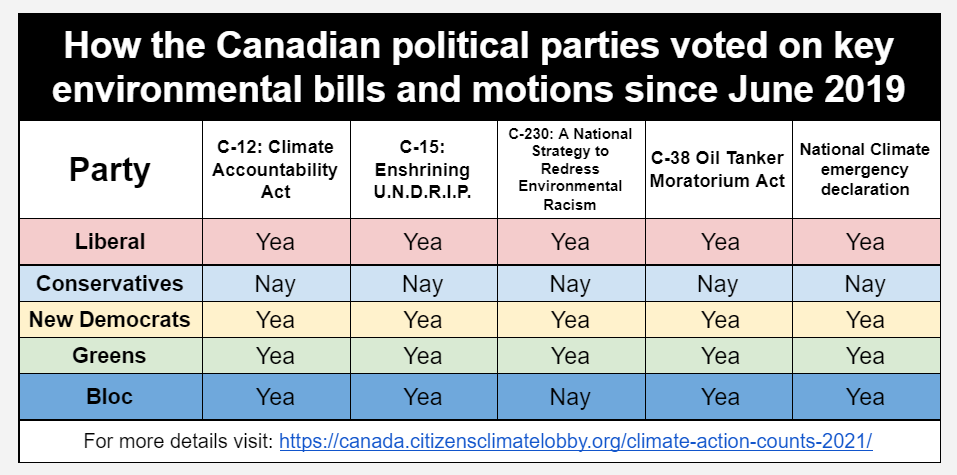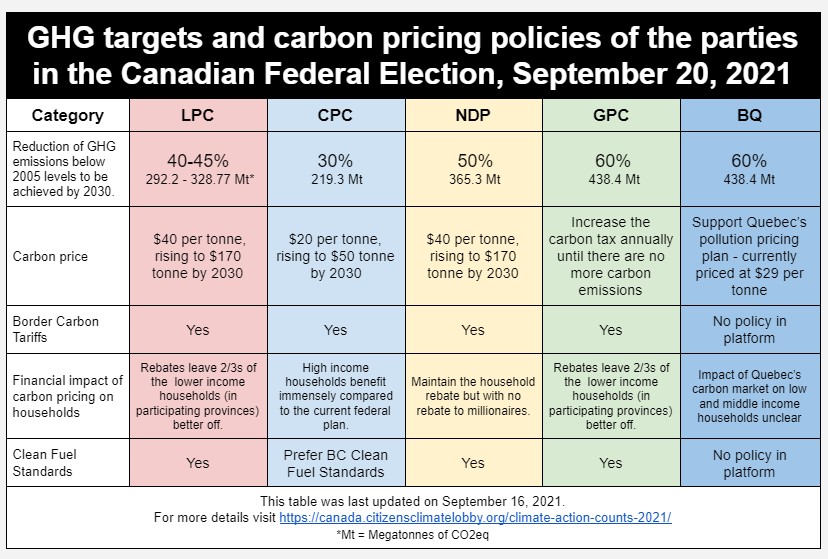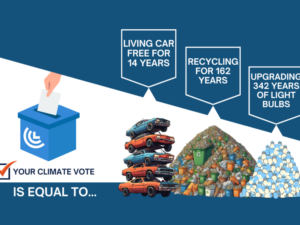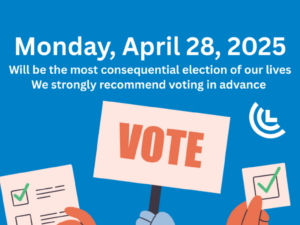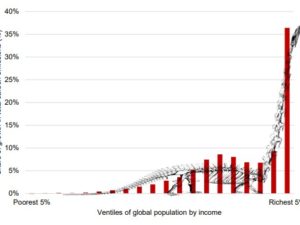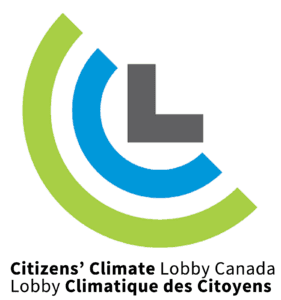For Immediate Release: September 2, 2021, Table updated September 16, 2021 Sudbury ON: This summer Canadians experienced some of the hottest temperatures in its recorded history with wildfires burning forests to a crisp and threatening communities in British Columbia and Ontario. Poll after poll after poll shows that the climate crisis is top of mind for Canadians. And it should be. On Monday, August 9, 2021 the Intergovernmental Panel on Climate Change published the Working Group I Report for the 6th Assessment. The nearly 4,000-page report, endorsed by 195 governments and representing global scientific consensus, was described by United Nations Secretary-General Antonio Guterres as “code red for humanity”. Less than a week later, a snap election was called in Canada. The date of the election is Monday, September 20, 2021. What do Canadians specifically need from our Parliamentarians at this critical juncture in history? The most important undertaking our next Members of Parliament can take is to create and shape climate policies based on hard evidence. We don’t have time to guess. We need to cut emissions fast while not burdening the poor and middle class during the transition. “The IPCC report is very clear that later is too late,” says Cathy Orlando, Citizens’ Climate Lobby Canada’s National Director. “We can build upon existing policies. Clearly, we need policy persistence. Dismantling evidence-based climate policies at this point in history would be catastrophically foolish. We cannot fail the next generation.” In the past 2.5 years, parliamentarians voted on Bill C230 – National Strategy to Redress Environmental Racism Act, Act C12 – the Net-Zero Emissions Accountability Act, C15 – Enshrining the United Nations Declaration of the Rights of Indigenous People under National Law, C38 – The Oil Tanker Moratorium Act, and the National Climate Emergency Declaration. The Liberals, NDP and Greens voted “Yea” for all of them . The Bloc voted Yea for all of them except the National Strategy to Redress Environmental Racism and the Conservatives voted “Nay” for all of them. For over 11 years now, in over 1000 meetings with their MPs, Citizens’ Climate Lobby volunteers have brought expert evidence on carbon pricing policy design to their MPs. The policy they have advocated for is carbon fee and dividend: put an incrementally rising fee on carbon pollution, give the money back to the people and include border carbon adjustments. It is supported by 28 Nobel Prize economists and thousands of economists worldwide. Canada’s backstop policy is a form of carbon fee and dividend. However, currently it does not have border carbon adjustments which would put a carbon fee on imports from countries without a carbon price. These adjustments at the border protect domestic industries and encourage other countries to price carbon pollution too. The good news is all parties want it. Data from Canada’s Parliamentary Budget Office shows that Canada’s current carbon pricing policy spares the poor and middle-class from shouldering the costs of the transition, too. GHGs from fossil fuels are heating our planet and we must cut emissions. The best policy to do that is to put a price on greenhouse gas pollution. Climate Interactive’s policy simulator EnROADs at MIT clearly shows that no policy comes close to reducing fossil fuel use, improving air quality and lowering the global temperature rise compared to carbon pricing. The higher the carbon price, the stronger the impact. And, because the vast majority of carbon fees collected funds are returned to Canadians equitably we can ramp up the price without burdening the poor or middle class and thus provoking a tax revolt. Of course other policies are needed. But it should be noted that maximizing forest cover, cutting fossil fuel subsidies and highly subsidizing clean energy all barely cut fossil fuel use and cool the planet compared to carbon pricing because these policies don’t make the big fossil fuel polluters pay. They are all important policies. But if you are seeking to dramatically reduce greenhouse gas emissions, carbon pricing is key. Thus in our second table we have presented the GHG targets and key elements of the carbon pricing platforms of each of the parties. Canadians can decide for themselves if they are satisfied with the carbon pricing policy design of the parties.Climate Policies Must Count in Election 2021 Because Later is Too Late
Media contact: Cathy Orlando cathy@citizensclimatelobby.org 705-929-4043
Media Release: Climate Action Counts 2021 – updated
Home » CCL Canada News » Media Release: Climate Action Counts 2021 – updated



